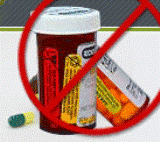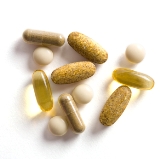Stretching: A Vexing Issue?
Part 1:  Some Studies Suggest Stretching Is Pointless:  Could This Be True?
There’s a fellow I know who thinks almost all studies conducted are gobbledygook because all they do is point out what’s already obvious. 
While there’s no question studies often do point out what the educated person knows to be true intuitively, they just as frequently point out things that run counter to common sense. 
I can think of no better example of this than the utility of stretching.¬† Since first grade gym class, ALL of us stretched and ALL of us were told of its importance, as stretching warms up cold muscles so that quick, sudden movements during exercise won‚Äôt result in injury.¬† Many of us have since seen the wisdom behind those words, as a number of people ‚Äď perhaps even ourselves ‚Äď have sustained injuries due to improper or a lack of stretching.
But there are some studies out there that suggest stretching ‚Äúdoes not produce clinically meaningful reductions in risk of exercise-related injury.‚Ä̬† This was the takeaway conclusion drawn by researchers from Wales, who tested the efficacy of warm-up stretches on a group of army-trained males over the course of 12 weeks.¬† The soldiers‚Äô stretching exercises were the static kind, the kind where you sit and reach to stretch the hamstrings, squeeze the knee to stretch the glutes, or stand and grab the foot from behind to stretch the quads.
To the researchers’ credit, they do mention that their sample included a group of over a thousand army recruits, but that’s a rarely reported fact in the media.  Too bad, because that fact goes a long way in discrediting their assertion that stretching is useless, because army-trained men have muscles that are far more tuned and trained than average Americans.  Thus, they’re naturally less likely to suffer from injury.
But what about everyone else?  Is the average American safe from injury whether warming up is part of the equation or not? 
If common sense doesn‚Äôt already tell you so, the answer of course is NO!¬† But because some studies suggest it‚Äôs OK to ‚Äúscratch the stretch,‚ÄĚ here‚Äôs a counter study saying why that‚Äôs a bad idea.
Researchers from the University of North Carolina found that warming up ‚Äď i.e. stretching ‚Äď is particularly important for young adults, people whose muscles have not yet fully developed.¬† When comparing how the young adults‚Äô performances and flexibility improved after a new warm-up program was included into their exercise regimen (i.e. soccer), they found that those who engaged in the warm-up program improved their performance on the playing field.¬† The researchers‚Äô assessed ‚Äúimprovement‚ÄĚ by observing their physical play after videotaping them.¬† Those that used the different warm-up techniques had improved jumping, cutting and foot planting ability.¬† This was particularly true among those who had the most apparent problems with flexibility prior to the ‚Äúwarm-up intervention.‚ÄĚ
The study involved approximately 175 young adults (a mix of boys and girls) between the ages of 10 and 17.  It’s published in this month’s edition of the American Journal of Sports Medicine.
Some stretches may be better than others and how one stretches may contribute to injury, but to say that the act of stretching ‚Äúproduces no clinically meaningful reductions‚ÄĚ to injury is a real ‚Äústretch.‚Ä̬†
Part 2:  What are the best stretches to perform both before and after a cardiovascular workout.
Sources:
EliteSoccerConditioning.com
New York Times
Ready, Set, GO!
NCBI
Science Daily
Posted: March 10th, 2009 under Stretching.
Tags: hamstring stretch, quadriceps stretch
Comments: 1


















